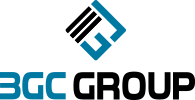The Impact of User Provisioning Done Right
- tnoguchi4
- Sep 12, 2023
- 3 min read

A recent CareerBuilder and Silkroad Technology study found that over two-thirds of employees are likely to stay at a company for at least three years if they have a good onboarding experience. The same study found that 9% of employees left a company due to a poor experience.
The onboarding experience is just one aspect of just how important proper onboarding and offboarding processes can be, and offboarding is just as important, as regulatory compliance, security concerns, and reputation are all critical areas of concern for organizations of any size.
None of this is new news, but as companies have emerged from the Covid era, employee expectations have also dramatically changed. The disparity of internet connectivity between employees and the mix of personal and work-related environments in WFH situations adds additional security layers for onboarding and offboarding. This is not just in one industry, but across nearly all industries where at least some portion of new employee hires expect to remote work or have hybrid WFH options.
IT departments play a critical role, as provisioning and deprovisioning tasks (access to SaaS platforms, email setup, the company deployed endpoints, delivery of documentation, network access, and the like) make up a large portion of the onboarding and offboarding process. Critical components to have effective onboarding and offboarding include: Workflow designs, automation of user provisioning tasks, and auditing/optimization to stamp out inaccuracies and inefficiencies. However, based on the maturity level of the IT team, they may or may not grasp the criticality of working with other departments who have an equal stake in the on/offboarding process (i.e., HR, the hiring manager, Security, etc.). As companies increasingly rely on cloud-based digital platforms, new employees need access to many more systems than ever before to function effectively. All of this means onboarding and offboarding are heavily reliant on IT departments.
A properly managed user provisioning workflow can ensure that users get access to all the systems they need with minimal delays, allowing new hires to hit the ground running, and gain confidence and productivity quickly. This translates to setting employees up for success.
Tracking all the user provisioning and deprovisioning tasks can be very complicated. Many companies that are digital native will have a large number of roles, and in many cases, user access to various systems is so granular that every employee might get slightly different combinations of access to different parts of each system. For example, software developers might need access to only certain project folders or applications segments that directly relate to their work while the product management team will need access to specific project folders, project management SaaS licenses, and status dashboards.
In just about every organization today, the IT department plays a critical role in helping to provide solutions to help the company move forward, generate new revenue, streamline operations, and cut costs. Unfortunately, user provisioning and deprovisioning, while an important part of operations, doesn’t help the company move forward as these tasks seem simple, but in practice can be a drain, with many sub-tasks of user provisioning and deprovisioning getting dropped, or more mission-critical projects being slowed down.
The issues are compounded as more and more companies adopt a digital native architecture, moving the majority of operations to the cloud. From Salesforce and NetSuite type data platforms to specialized HRIS and marketing tools, to SCM, financial accounting, to productivity and communication/collaboration tools, companies are increasingly going full cloud, and that creates a whole new problem as these migrations further complicate user provisioning.
Increasingly, IT is taking center stage in the onboarding and offboarding as the number of user provisioning-related tasks begin to dominate the overall onboarding and offboarding task list.
Here are 4 examples of some under-the-hood features we've been working on that will be part of the overall Solution:







Comments